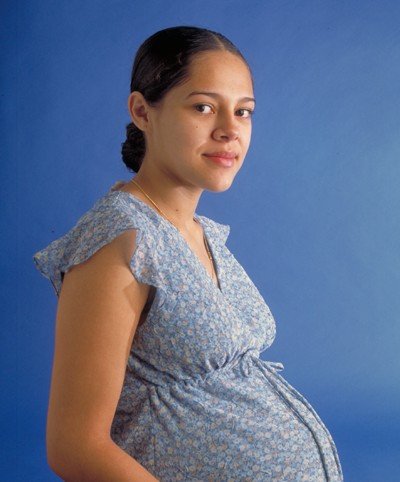There is a growing body of literature which indicates that anxiety symptoms are common during pregnancy and the postpartum period. Anxiety during pregnancy places the woman at greater risk for postpartum depression and may also affect pregnancy outcomes. The American College of Obstetricians and Gynecologists (ACOG) now recommends that clinicians screen women at least once during the perinatal period for depression and anxiety using a standardized, validated tool.
But what tool screens for anxiety symptoms? Certain items on the Edinburgh Postnatal Depression Scale (EPDS) may help to identify women with anxiety, but it is likely that this instrument does not identify all women with clinically relevant anxiety. Researchers in Western Australia developed and tested the Perinatal Anxiety Screening Scale or PASS to specifically screen for a broad range of anxiety symptoms during pregnancy and the postpartum period. This 31-item questionnaire is easy to complete and score, is sensitive to how anxiety presents in perinatal women and may be used in a variety of settings. This scale assesses four categories of anxiety: (1) acute anxiety and adjustment, (2) general worry and specific fears, (3) perfectionism, control and trauma and (4) social anxiety.
In most cases, we tend to use screening tools in a dichotomous fashion. For example, for the EPDS, a woman who scores 13 or higher is likely to have clinically significant depressive symptoms, whereas a woman who scores below 13 is considered to be at low risk for depression. This black-and-white approach clearly has its limitations. For one, symptoms of depression and anxiety tend to occur along a clinical continuum. Furthermore, over the course of the perinatal period, the levels of anxiety a woman experiences may vary depending on events and circumstances related to the pregnancy.
In a recent study, the research group who developed the PASS attempts to refine its use by assessing its ability to measure the severity of anxiety symptoms. It is hoped that a more specific tool could enhance screening for and treatment of women with perinatal anxiety. Antenatal and postpartum women (n=410) were recruited from obstetric clinics and mental health services at an obstetric hospital. Participants completed the EPDS, the Depression, Anxiety and Stress Scale (DASS-21), the Spielberg State-Trait Anxiety Inventory (STAI), the Beck Depression Inventory II (BDI), and the PASS. The women referred to mental health services were assessed to determine anxiety diagnoses via a diagnostic interview.
In the pilot study, a score of 26 was used to identify clinically significant anxiety symptoms. In this study, the researchers were able to identify three normative groups for the PASS based on the severity of anxiety measured using the standardized scales listed above and anxiety diagnoses: minimal anxiety (PASS score of 0-20), mild-moderate anxiety (score of 21-41), and severe anxiety (score of 42-93).
Using this screening tool to distinguish mild from more severe anxiety symptoms will help to facilitate treatment in this population and will help to ensure that the women in greatest need of intervention will be referred to the appropriate treaters. In addition, the authors note that being able to track changes over time in the severity of anxiety may improve the sensitivity of perinatal screening and therefore may facilitate early intervention and timely referral to care by providing additional information. Further studies are needed to determine if the PASS may be used to monitor changes in anxiety symptoms during the course of treatment.
Here is a downloadable copy of the PASS from the Western Australia Department of Health.
Ruta Nonacs, MD PhD
Somerville S, Dedman K, Hagan R, et al. The Perinatal Anxiety Screening Scale: development and preliminary validation. Arch Womens Ment Health. 2014 Apr 4. [Epub ahead of print]
Somerville S, Byrne SL, et al. Detecting the severity of perinatal anxiety with the perinatal anxiety screening scale (PASS). J Affect Disord 2015 [Epub ahead of print].








Can i get indian studies on PASS used to assess the anxiety of postnatal mother of preterm baby who is in NICU
I don’t think we have any. This study (see link below) used the HADS.
Can i get Perinatal Anxiety Screening Scale??
Here is a link to a copy of the survey.
Is the PASS in Spanish?
I am student of vydehi institute of nursing so i want to use this scale
Here is a link to the PASS screening scale:
https://drsarahallen.com/wp-content/uploads/2015/10/PerinatalAnxietyScreeningScale2.pdf
I am a nursing student so i want to use this scale in my research . so could i used it without written permission
I believe you can use it with appropriate citation when you present/publish your research. This is not a scale we developed at MGH, so you might want to contact the authors of the original paper.
How can I apply for permission for using PASS scale for my research study?
When and how often should the PASS be administered?